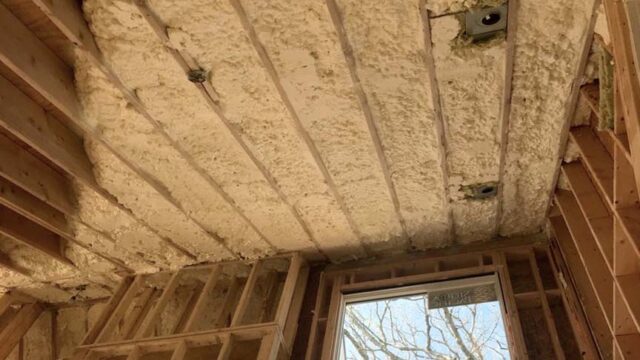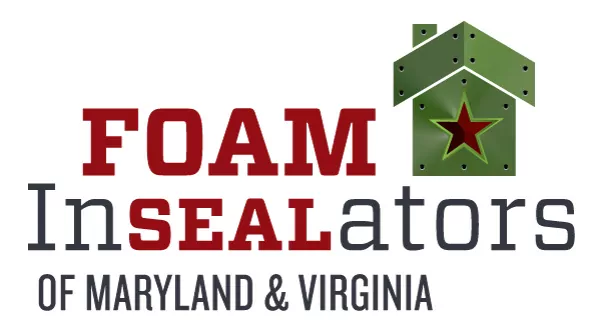In 2025, home insulation is stepping into the spotlight. Homeowners across the country are prioritizing smarter, greener ways to save energy and improve their home’s comfort. Thanks to several emerging trends, including new tech upgrades and stricter building codes, it’s a great time to get on board. If you’re looking to cut your utility bills and improve your living space, it’s important to know what’s driving these changes.
Tougher Energy Codes and Efficiency Standards
There’s a strong emphasis on energy efficiency this year. Across the United States, including here in Maryland and Virginia, energy efficiency standards are getting tighter. State building codes are adapting to require higher R-values in building construction—especially in walls and attics. For example, new Maryland homes must meet R-49 attic insulation standards, while older homes often have much less insulation in them.
 That’s a big deal, since over half of our homes’ energy use goes toward heating and cooling. More stringent insulation and air sealing requirements will increase each new home’s energy efficiency from the start and help cut heating and cooling costs by an average of 15%.
That’s a big deal, since over half of our homes’ energy use goes toward heating and cooling. More stringent insulation and air sealing requirements will increase each new home’s energy efficiency from the start and help cut heating and cooling costs by an average of 15%.
Surprisingly, about 90% of U.S. homes are under insulated by today’s standards. The good news is that more and more homeowners of existing homes are adding insulation in their attics, crawl spaces, and walls to meet or exceed current code levels.
If you own an existing home, consider undergoing a professional home energy audit to show you exactly where your insulation is lacking, so you can be sure to install the right amount for your home and feel the comfort difference.
Smart Homes Meet Superior Insulation
Modern technology and insulation have created a fantastic partnership, and many homeowners are taking advantage of creating “smart homes.” But it’s not just about gadgets—it’s about working smarter.
Smart thermostats, for instance, learn your schedule and adjust your home’s indoor temperature accordingly, saving you money on your heating and cooling costs. But when combined with a well-insulated and air sealed home, smart thermostats work even better to maximize your home’s comfort and efficiency, saving you approximately $250 a year on your energy bill. That adds up fast.
There’s also a new wave of advanced, high performing insulation solutions coming soon. Be on the lookout for insulating materials with embedded sensors to track temperature and moisture, giving you real-time info. This combo of smart tech and strong insulation creates a synergy that maximizes comfort and efficiency in both residential and commercial spaces.
Healthier and Greener Insulation Choices

More homeowners and builders are choosing formaldehyde free and low-VOC (volatile organic compounds) insulation products, as well as high-performance insulation. Insulation made of recycled and natural materials, such as fiberglass and cellulose, are also trending.
Spray foam insulation, which seals and insulates in one product, is another popular insulation choice because it helps create a healthier indoor environment. Some newer foams even include bio-based ingredients to support the demand for sustainable options. This shift is being seen across the world market, including North America, Europe, and Asia Pacific, as global awareness grows.
Incentives and Savings Fuel Insulation Upgrades
Another reason insulation is booming right now is its money-saving potential in the form of incentives. The federal Inflation Reduction Act offers a 30% home energy tax credit for insulation and air sealing upgrades, up to $1,200 per year through 2032. Local programs are also jumping in—Dominion Energy in Virginia offers home energy audits and rebates, while Maryland’s EmPOWER program gives homeowners utility rebates.
Insulation upgrades often pay for themselves in just a few years thanks to lower energy bills. And homes that are more energy efficient often have a better resale price.
Your Partner in Insulation Solutions
As homeowners across Virginia, Maryland, and the world become more concerned about energy costs, indoor air quality, and green building techniques, making sure your house is properly insulated is critical. Thankfully, tighter building codes, smart home technology, healthier materials, and financial incentives are creating an ideal environment for energy upgrades.
At Foam InSEALators, we specialize in helping Maryland and Virginia homeowners stay ahead of these insulation market trends. Our expert team installs high quality spray foam and fiberglass insulation in new and existing homes throughout our community. Homeowners and contractors have counted on us to create a healthier, energy-efficient community since 1994, and you can too. Contact us today for your free estimate. Let’s make your home more efficient, comfortable, and future-ready.
References
DeVere Insulation. (n.d.). Perks of insulation in new Maryland home.
https://devereinsulation.com/perks-of-insulation-in-new-maryland-home/
Energy Star / U.S. Environmental Protection Agency (EPA). (n.d.). Home sealing.
https://www.energystar.gov/saveathome/seal_insulate/why-seal-and-insulate
Foam InSEALators. (2022). Attic insulation codes Maryland Virginia.
https://insulatewithfoam.com/2022/01/attic-insulation-codes-maryland-virginia/
Foam InSEALators. (n.d.). Home energy audits. https://insulatewithfoam.com/home-energy-audits/
Global Market Insights (GMI). (November 2024). Spray foam market size- by product type, by density, by end use industry, by distribution channel, forecast 2024-2032. https://www.gminsights.com/industry-analysis/spray-foam-market
HBS Dealer. (n.d.). Survey: 90% of U.S. homes are under-insulated. https://hbsdealer.com/news/survey-0-us-homes-are-under-insulated
Internal Revenue Service. (n.d.). Home energy tax credits. https://www.irs.gov/credits-deductions/home-energy-tax-credits
Restoration1. (n.d.). Top 5 home restoration trends for 2025: What homeowners and realtors need to know.
Southland Insulators. (n.d.). Fall projects that save money and energy. https://southlandinsulators.com/fall-projects-that-save-money-and-energy/
U.S. Department of Energy. (n.d.). Energy data facts. https://rpsc.energy.gov/energy-data-facts

